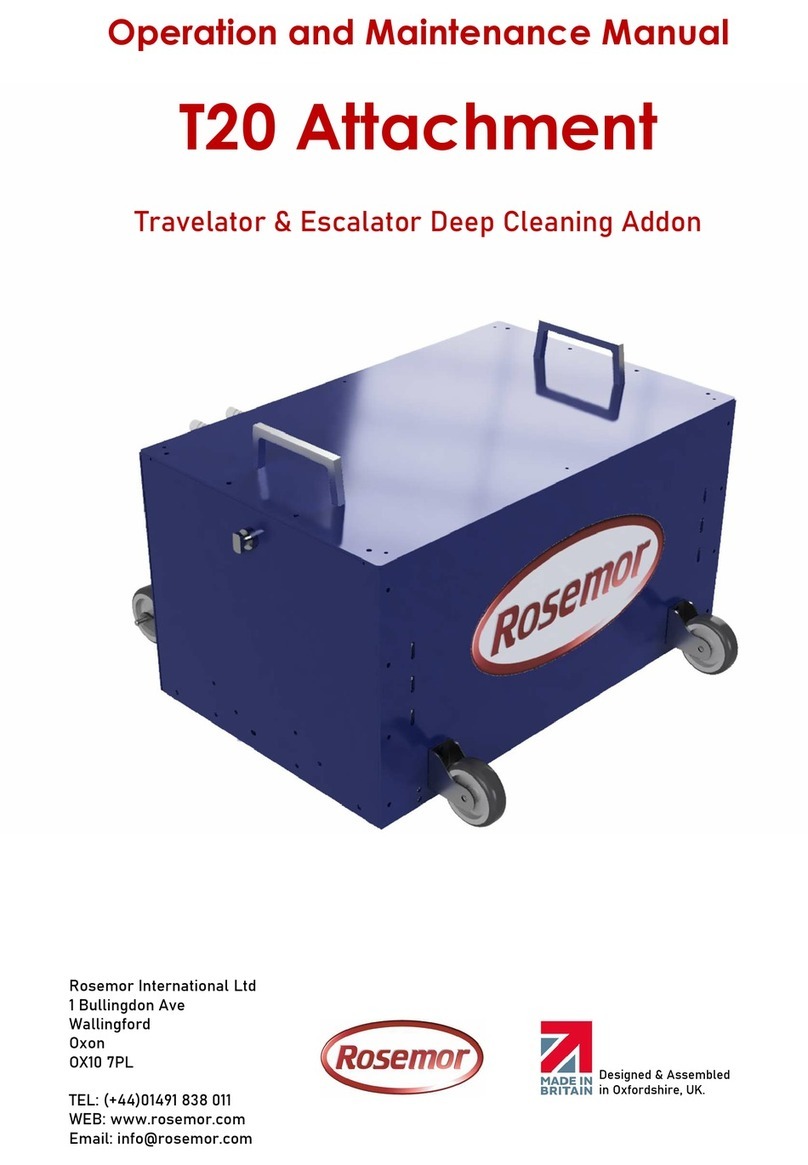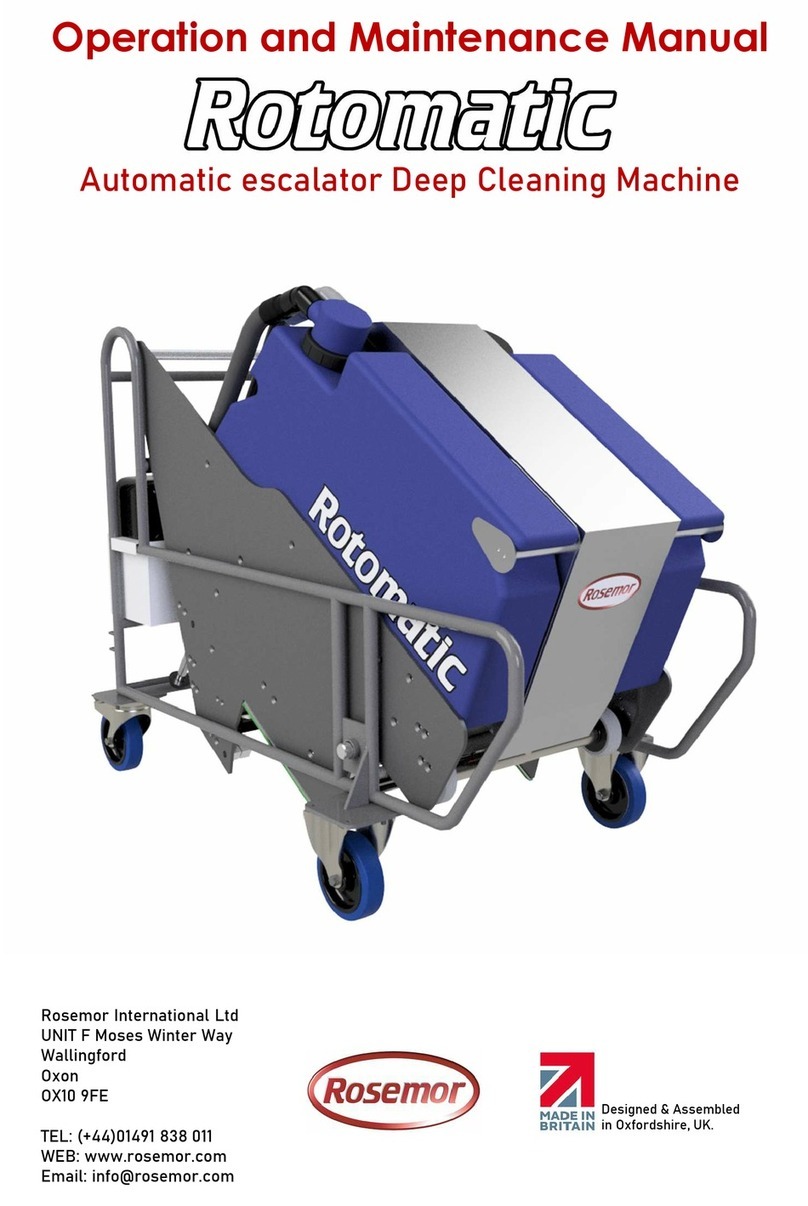
Escalator Deep Cleaning Machine Rotomac 360 1 Safety instructions
Page 4
1 Safety instructions
1.1 Preliminary remarks
The escalator deep machine Rotomac 360 was
manufactured according to state-of-the-art tech-
nology and in compliance with all relevant regu-
lations. This, however, does not guarantee that
some other unavoidable dangers for persons
and property can occur. All personnel working
with this machine must therefore read and follow
these operating instructions, and in particular the
safety regulations, with great care.
These operating instructions must remain at the
machine for use by the operator. Each operator
must receive thorough instruction on handling
and working with the machine.
1.2 Owner’s duties
In accordance with EU directive on the use of
operating equipment 89/655/EEC Art. 6(1) and 7
and EU framework directive 89/391/EEC Art.
1(1) and Art. 6(1), the owner of the equipment is
obliged to instruct all persons, particularly with
regard to safety, who will be authorised to work
on assembly, operation, maintenance, repair or
dismantling of the machine.
The owner is also obliged in accordance with EU
directive on the use of operating equipment
89/655/EEC Art. 4a to inspect the machine be-
fore start-up, following repair work and following
faults or malfunction.
1.3 Intended and specified use
The escalator deep cleaning machine Rotomac
360 is exclusively intended for basic and main-
tenance cleaning of indoor and outdoor escala-
tors. Any use beyond this stipulation must be
considered as contrary to the manufacturer’s
intentions. The manufacturer will not be liable for
any damage resulting from such work; all risk in
this case will be borne exclusively by the opera-
tor. Correct use of the machine also includes
compliance with the conditions of operation and
maintenance stipulated by the manufacturer.
•
The escalator deep cleaning machine Roto-
mac 360 is not intended nor suitable for
cleaning hazardous dirt.
•
The machine is not fire-proof.
•
The machine is also not licensed for use in
cleaning public streets and paths.
1.4 Who may operate the machine?
The machine may only be used by persons who
have been instructed in its operation and who
are expressly authorised to carry out such work.
These persons should be at least 18 years old.
All relevant accident prevention regulations and
other generally recognised rules of safety engi-
neering, industrial medicine and the highway
code must be strictly observed.
Assembly, equipment, maintenance and repair
work demand special knowledge and may only
be carried out by specially trained experts.
1.5 Safety for the operator
•
The user must under no circumstances touch
the plug of the power supply with damp
hands.
•
When the machine is being disconnected
from the power network, only the plug itself
may be pulled - never the power cable.
•
The machine may be repaired or opened only
by qualified electricians.
If work on the opened machine with
connected current is absolutely nec-
essary, such work may be carried out
only by a qualified electrician who is
familiar with all attendant dangers and
the relevant work stipulations
(VDE0100). When work is carried out
on machine or parts when live, only
tools specially intended for this pur-
pose may be used






























